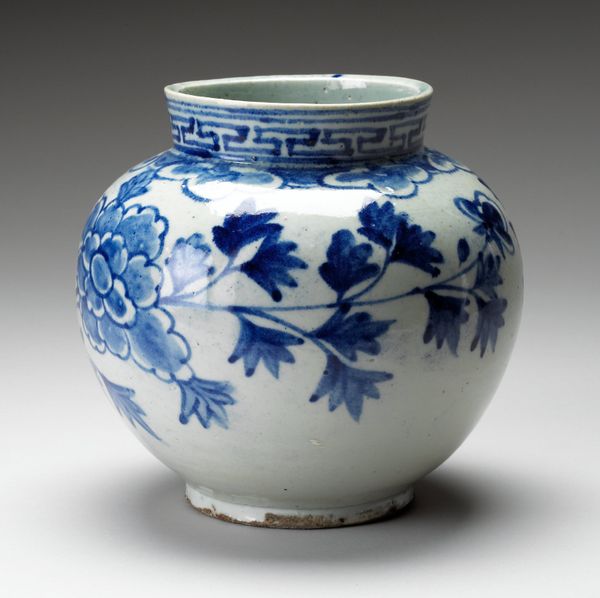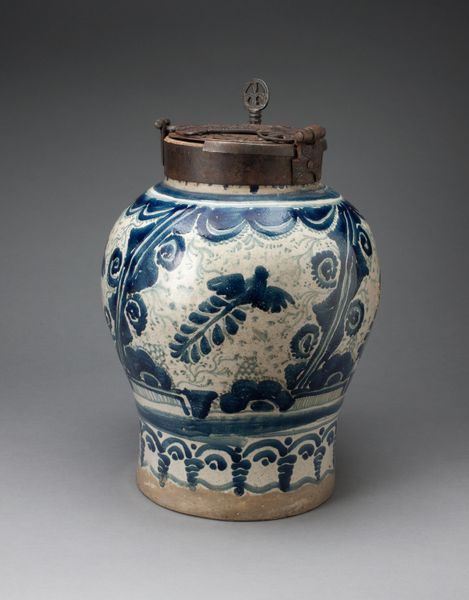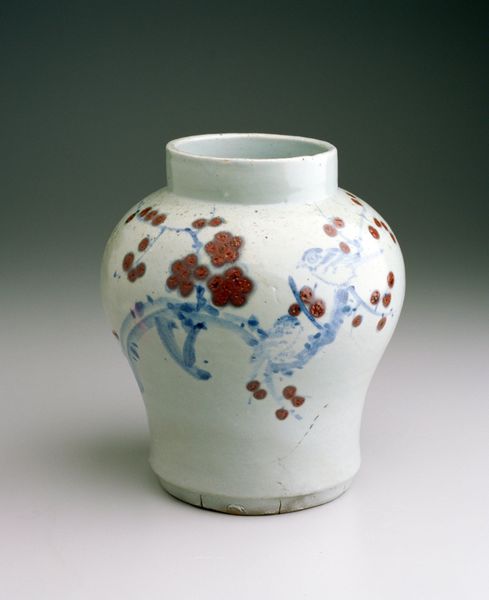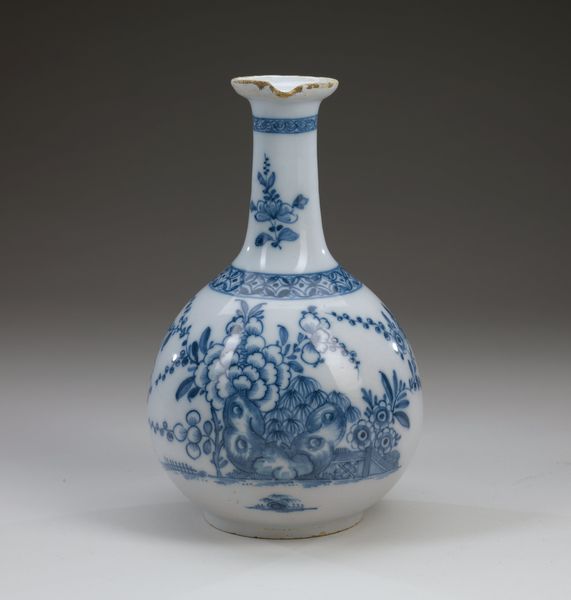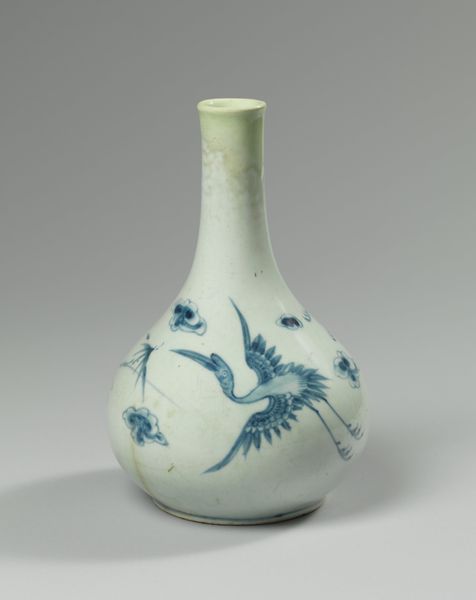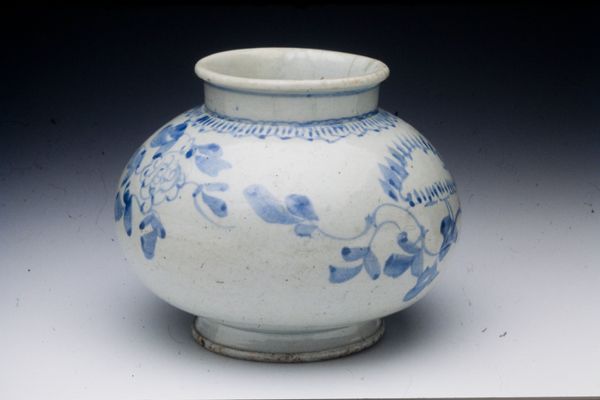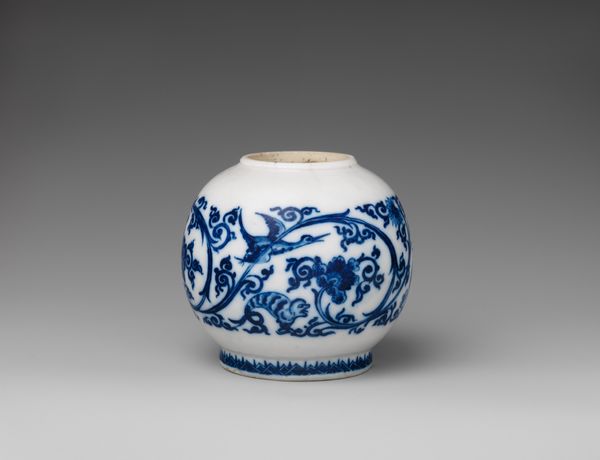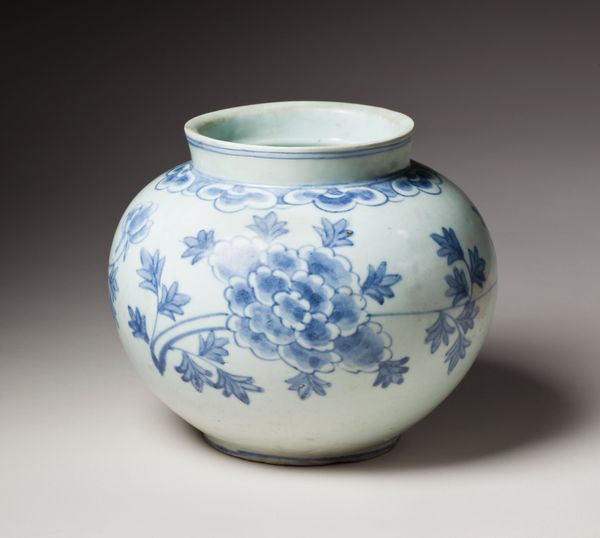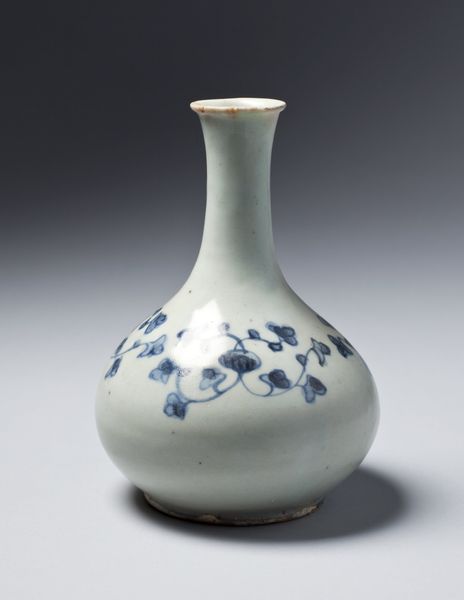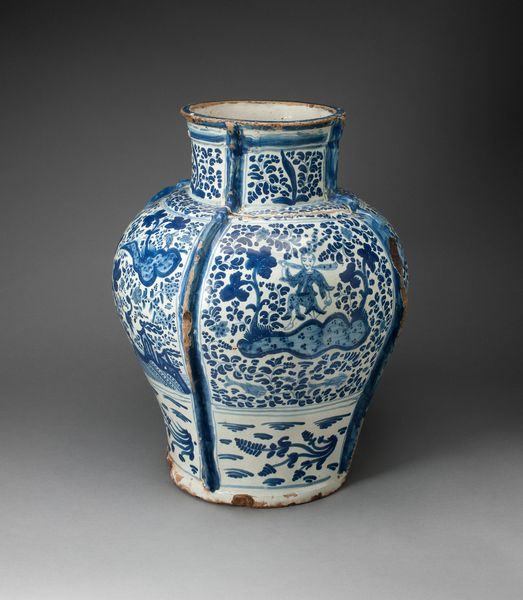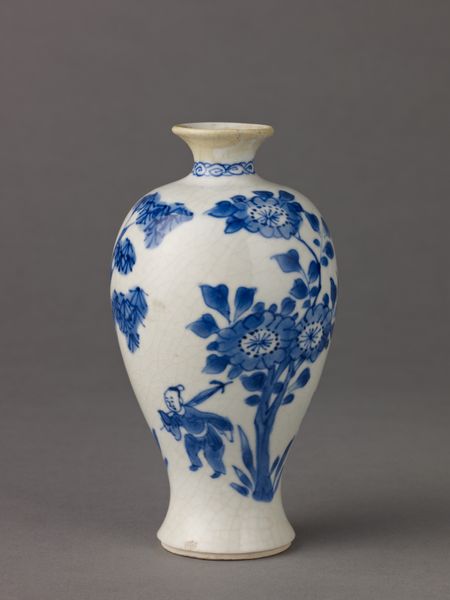
ceramic
#
asian-art
#
ceramic
#
ceramic
Dimensions: 3 7/8 x 4 in. (9.84 x 10.16 cm)
Copyright: Public Domain
Editor: This little ceramic jar, dating from around the 18th century, is unassuming but kind of charming, isn't it? It has this simple floral decoration in blue on a white ground. What strikes me most is how handmade it looks, almost rustic. What do you make of it? Curator: Absolutely. Notice how the emphasis isn't on some kind of idealized beauty, but rather on the act of creation itself. We're drawn to the traces of the artist's hand: the slightly uneven glaze, the imperfect floral design, and the functional form of the jar itself. How do you think this approach challenges the traditional divide between craft and art? Editor: That's a good question. It makes me think about how much we value perfect execution versus the story of how something was made. This jar feels more honest, somehow. It’s also tempting to see it as less valuable. Is this right? Curator: That distinction is key. It’s also misleading. In the context of its production, was this vessel primarily a functional object? If so, was the decoration integral to its utility? In either case, we can examine the clay and its source. Further, we can investigate who was consuming goods like this during that era. It’s less about intrinsic monetary value, and more about its social function and meaning at the time. How does it help us understand labor, materiality, and consumption in 18th-century Asian art? Editor: So, we should look at who was making these kinds of things, for whom they were made, and where the materials came from, not just how "pretty" it is. I've definitely got a different way of approaching ceramic art now! Thanks. Curator: Precisely. Examining the means of production opens up the object's historical reality. I also feel that seeing the "human element" gives us an invitation to connect with it.
Comments
No comments
Be the first to comment and join the conversation on the ultimate creative platform.
